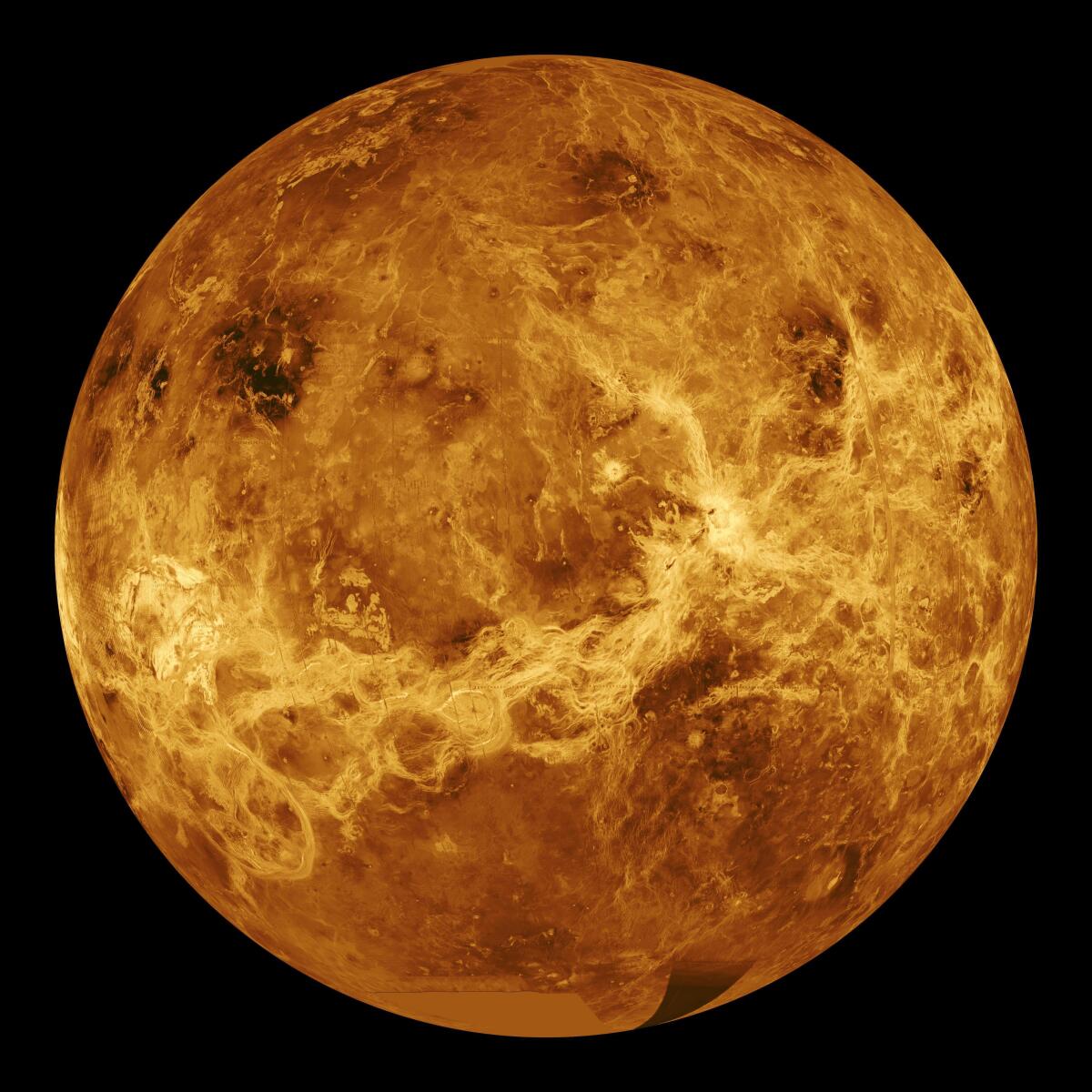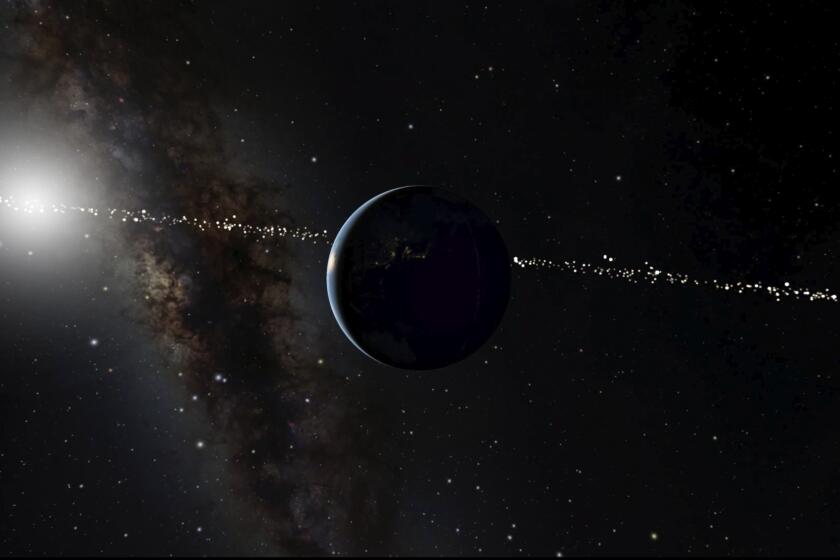Study nixes life in clouds of Venus, but maybe it’s in Jupiter’s?

- Share via
CAPE CANAVERAL, Fla. — A new study is throwing cold water on the possibility of life in the clouds of Venus.
Scientists from Europe and the U.S. reported Monday there isn’t nearly enough water vapor in the scorching planet’s clouds to support life as we know it.
The team looked into the matter following September’s surprise announcement by others that strange, tiny organisms could be lurking in the thick, sulfuric acid-filled clouds of Venus. Through spacecraft observations, the latest research group found the water level is more than 100 times too low to support Earth-like life.
“It’s almost at the bottom of the scale and an unbridgeable distance from what life requires to be active,” said the lead author, John Hallsworth, a microbiologist at Queen’s University Belfast in Northern Ireland.
His team looked at the most dry-tolerant and also the most acid-tolerant microbes on Earth — and they “wouldn’t stand a chance in Venus.”
Astronomers detected a rare molecule called phosphine in the clouds above Venus. Scientists say it could have been created by extraterrestrial life.
While the latest findings veto Venus at least for water-based organisms, they identify another planet — Jupiter — with enough water in the clouds and the right atmospheric temperatures to support life.
“Now I’m not suggesting there’s life on Jupiter and I’m not even suggesting life could be there because it would need the nutrients to be there and we can’t be sure of that,” Hallsworth stressed to reporters. “But still it’s a profound and exciting finding and totally unexpected.”
Further studies will be needed to ascertain whether microbial life might exist deep in the clouds of Jupiter, according to Hallsworth and NASA astrobiologist Chris McKay, a co-author on the research paper published Monday in the journal Nature Astronomy.
As for Venus, three new spacecraft will be headed there later this decade and early next decade — two by NASA and one by the European Space Agency. Hallsworth and McKay don’t expect their results to change regarding uninhabitable water activity on our solar system’s hottest planet.
“It’s unfortunate because I’m very interested in searching for life on other worlds and I would love to think that Venus is habitable,” McKay said.
A new study says there are lots of stars and planets in our galactic neighborhood that can get a good glimpse of Earth and its human civilization.
The scientists behind the September study possibly hinting at life in the Vesuvian clouds based their findings on the presence of the toxic gas phosphine. On Earth, it’s associated with life. The researchers argued that Venus’ phosphine levels are too high to be geologic in origin.
“We are not trying to push Venus as a definitely habitable world. So far all conventional interpretations say Venus is inhabitable!” said Massachusetts Institute of Technology astrophysicist Sara Seager, part of the September team.
Regarding the latest study, “we are tremendously enthusiastic about leaving no stone unturned, in case there is life on Venus,” she added in an email.
There’s always the possibility that any life in Venus’ clouds — if it exists — could be totally unlike anything on Earth and adapted to the hothouse planet’s extremely hot and harsh conditions, according to scientists.
“If there is life in the clouds of Venus, then this life has to be ‘Life as we do not know it,’” said astrobiologist Janusz Petkowski, a colleague of Seager’s at MIT. “The question is how different that life can be?”







